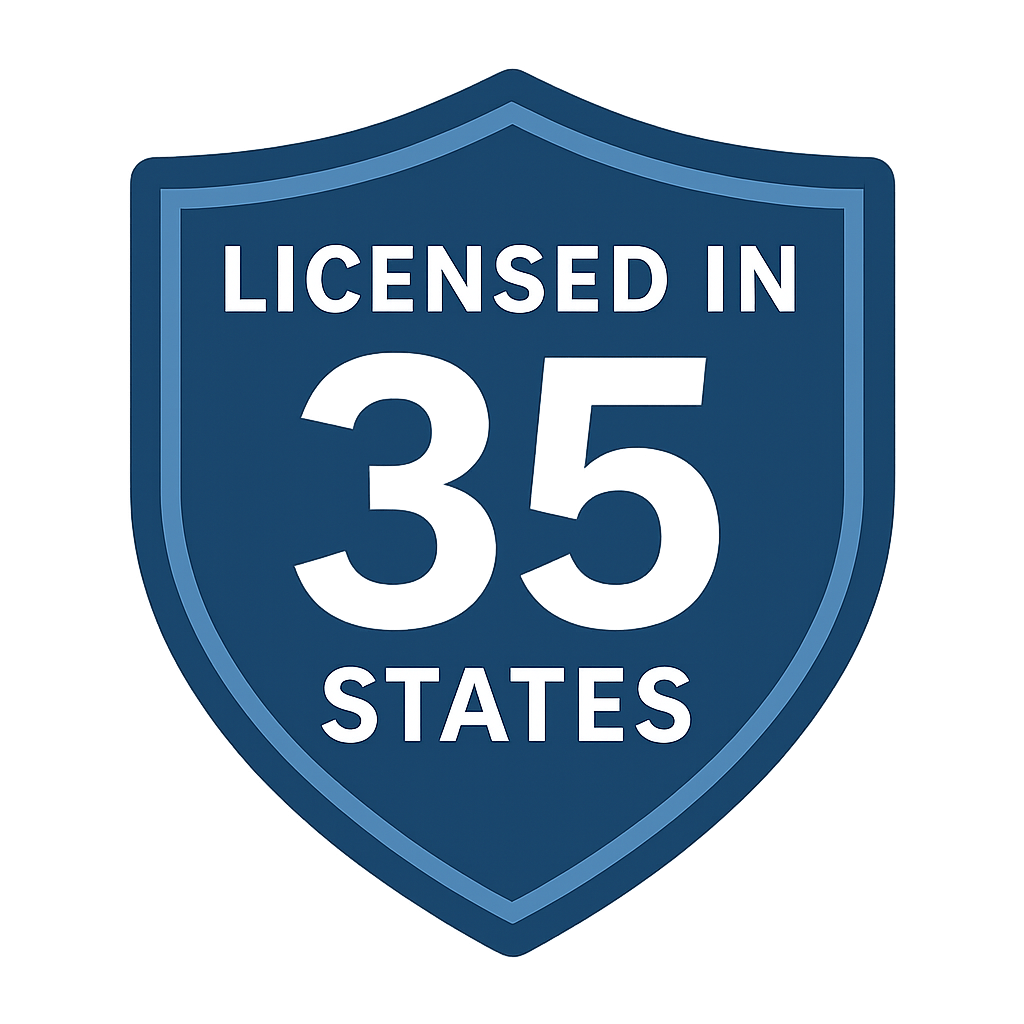What Is Gap Insurance for Cars?
Learn about gap insurance and how it protects you financially when financing or leasing a vehicle.
On this page
Overview of Gap Insurance
What Is Gap Insurance?
Gap insurance covers the difference between a car’s value and the loan balance if totaled. It’s crucial for financed or leased vehicles. Prevents out-of-pocket costs after accidents.
Why It’s Needed
Cars depreciate quickly, leaving loan balances higher than market value. Gap insurance bridges this gap in claims. Learn more at how does car insurance work.
Who Benefits
Drivers with new cars, long-term loans, or low down payments benefit most. It’s often required by lenders.
FAQs About Gap Insurance for Cars
What does gap insurance cover?
Gap insurance covers the difference between a car’s actual cash value and your loan balance if totaled. It applies to accidents, theft, or total loss. It doesn’t cover repairs or deductibles.
Who needs gap insurance?
Drivers with financed or leased cars, especially with low down payments, need it. It’s vital for fast-depreciating vehicles. Lenders often mandate it for leased cars.
Is gap insurance mandatory?
Gap insurance is not legally required but often mandated by lenders or lessors. It protects their investment in financed vehicles. You can opt out if you own the car outright.
How does gap insurance work?
If your car is totaled, standard insurance pays the car’s market value. Gap insurance covers any remaining loan balance. Claims require proof of loss and loan details.
Does gap insurance cover theft?
Yes, gap insurance covers theft if the car is unrecoverable. It pays the loan balance minus the insurance payout. Comprehensive coverage is required for theft claims.
How much does gap insurance cost?
Gap insurance typically costs $20-$50 annually, added to your policy. Costs vary by insurer and loan amount. Compare at insurance providers.
Where can I buy gap insurance?
Buy gap insurance from insurers, dealerships, or lenders. Insurers like Progressive or Geico offer it as an add-on. Dealerships may charge higher rates.
Can I get gap insurance later?
Yes, but it’s best purchased when financing starts. Some insurers allow adding it within the first year. Check policy terms for eligibility.
Does gap insurance affect premiums?
Gap insurance adds a small amount to premiums, often less than 5 percent. It’s cost-effective compared to paying loan balances out-of-pocket. Bundling may reduce overall costs.
Can I cancel gap insurance?
Yes, cancel when your loan balance falls below the car’s value. Contact your insurer or lender for refunds. See how to cancel car insurance.
Do all cars qualify for gap insurance?
New or slightly used cars with loans or leases qualify. Classic or high-mileage cars may not. Insurers set specific eligibility criteria.
Does gap insurance cover negative equity?
Yes, gap insurance covers negative equity from prior loans rolled into new ones. Coverage limits vary by provider. Confirm terms before purchasing.
Is gap insurance needed for used cars?
Gap insurance is useful for used cars with loans, especially recent models. Depreciation still creates loan-value gaps. Assess loan terms to decide.
Does gap insurance cover deductibles?
No, gap insurance doesn’t cover deductibles from your collision or comprehensive claim. You pay deductibles out-of-pocket. Gap only addresses loan balances.
Can gap insurance be transferred?
Gap insurance is tied to the vehicle and loan, not transferable to new cars. New policies are needed for different vehicles. Contact your insurer for details.
How do I file a gap insurance claim?
File a claim with your insurer after a total loss, providing loan and claim details. Your primary insurance pays first, then gap covers the rest. Prompt submission speeds up payouts.
Does gap insurance cover repairs?
No, gap insurance only applies to totaled or stolen vehicles. Repairs fall under collision or comprehensive coverage. Always carry full coverage with gap policies.
What if my car isn’t totaled?
Gap insurance doesn’t apply if your car is repairable. Collision or comprehensive covers repairs, minus deductibles. Gap only activates for total losses.
Does gap insurance cover lease penalties?
Some gap policies cover lease termination fees after a total loss. Check policy terms for specifics. Standard gap focuses on loan balances.
What happens after the loan is paid?
Once your loan balance is below the car’s value, gap insurance is unnecessary. Cancel to avoid extra costs. Refunds may be available.
Is gap insurance needed for short-term loans?
Short-term loans with high down payments may not need gap insurance. Rapid equity buildup reduces the gap risk. Evaluate loan-to-value ratios first.
Does gap insurance apply to electric vehicles?
Yes, gap insurance covers electric vehicles with loans or leases. EVs depreciate like other cars, creating gaps. Check car insurance explained for EV coverage.
Can gap insurance be added mid-loan?
Some insurers allow adding gap insurance mid-loan, typically within 12 months. Restrictions may apply based on loan age. Contact your provider for eligibility.
Does gap insurance cover motorcycles?
Gap insurance is available for financed motorcycles, similar to cars. It’s less common but offered by some insurers. See motorcycle insurance for details.
Is gap insurance worth it?
Gap insurance is worth it for new cars or low down payments. It prevents financial loss if totaled early in the loan. Assess loan terms to decide.
Which insurers offer gap insurance?
Geico, Progressive, and State Farm often include gap insurance as an add-on. Local insurers may also offer it. Compare at insurance providers.
Should I buy gap from a dealer?
Dealers offer gap insurance but often charge more than insurers. Compare costs with your insurance provider. Insurers typically provide better rates.
Can gap insurance be bundled?
Gap insurance is often bundled with auto policies for convenience. Bundling with home insurance may save more. See homeowners insurance for options.
How long do I need gap insurance?
Keep gap insurance until your loan balance is below the car’s value. This typically happens 2-3 years into the loan. Cancel to avoid unnecessary costs.
Does gap insurance cover missed payments?
No, gap insurance doesn’t cover missed loan payments or penalties. It only addresses loan balances after total loss. Maintain timely payments to avoid issues.
Compare Gap Insurance Providers
Evaluate providers offering gap insurance for cost, coverage, and ease of claims.
| Provider | Gap Insurance Cost | Key Features | Best For |
|---|---|---|---|
| Geico | $25/year | Easy online claims, bundling | Low-cost policies |
| Progressive | $30/year | Loan/lease payoff coverage | Financed vehicles |
| State Farm | $40/year | Local agents, lease support | Personalized service |
Service Area
Understanding Gap Insurance for Cars
Gap insurance covers the difference between a car’s actual cash value and the remaining loan or lease balance if totaled or stolen. It’s essential for new or financed vehicles, as cars depreciate rapidly, often leaving loan balances higher than market value within the first few years. Typically costing $20-$50 annually, gap insurance is a small add-on to standard policies but saves thousands in total loss scenarios. It’s frequently required for leased cars or loans with low down payments, protecting drivers from out-of-pocket costs. Learn more about coverage at car insurance explained.
Gap insurance doesn’t cover repairs, deductibles, or missed payments, only the loan gap after a claim. It’s available from insurers like Geico or Progressive, often cheaper than dealership offerings. Drivers with short-term loans or high equity may not need it, but it’s critical for long-term loans or electric vehicles with high depreciation. Policies are vehicle-specific and non-transferable, so new cars require new gap coverage. Filing a claim involves submitting loan details and proof of loss after standard insurance pays out.
You can cancel gap insurance once your loan balance falls below the car’s value, typically 2-3 years into repayment. Bundling with auto or homeowners insurance can lower overall costs. High-risk drivers with SR-22 requirements can still get gap insurance, though premiums may be higher. Compare providers at insurance providers to find affordable options. For personalized assistance, visit company contact.
Last Updated on by Shawn Christie




